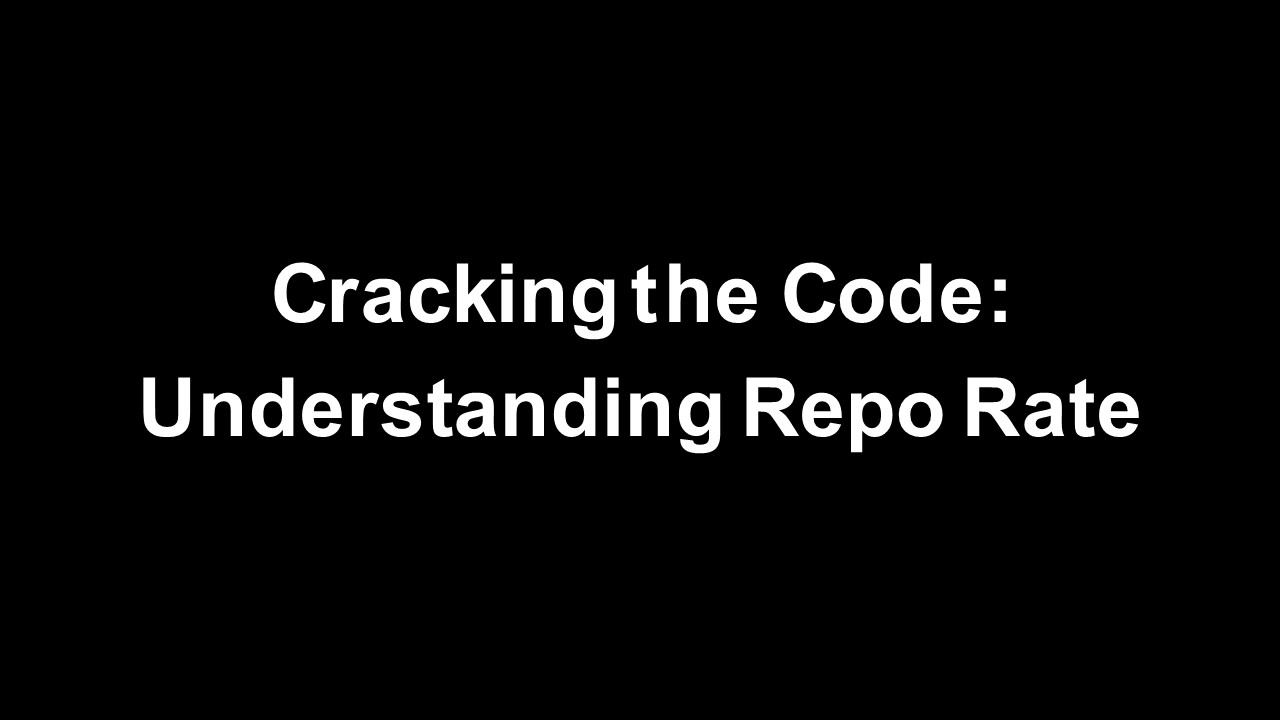Cracking the Code Understanding Repo Rate PowerPoint PPT Presentation
Title: Cracking the Code Understanding Repo Rate
1
Cracking the Code Understanding Repo Rate
2
Introduction to Repo Rate
Repo rate stands for repurchase rate, which is
the interest rate at which the central bank of a
country lends money to commercial banks. It is
one of the most important tools used by central
banks to control inflation and stabilize the
economy. When the repo rate is high, it becomes
more expensive for commercial banks to borrow
money from the central bank. This leads to a
decrease in the amount of money available in the
economy, which can help reduce inflation. Know
More about repo rate through our ppt or visit
our website.
3
How Repo Rate Affects the Economy
Repo rate has a direct impact on the cost of
borrowing money for commercial banks. When the
repo rate is high, it becomes more expensive for
banks to borrow money, which can lead to an
increase in the interest rates they charge their
customers for loans and mortgages. This can have
a ripple effect on the entire economy, as higher
interest rates can discourage people from
borrowing money to invest or make purchases.
This can slow down economic growth and lead to a
decrease in consumer spending.
4
Factors That Influence Repo Rate
There are several factors that influence the
decision of a central bank to adjust the repo
rate. One of the main factors is inflation. If
inflation is high, the central bank may increase
the repo rate to reduce the amount of money
available in the economy and curb
inflation. Other factors that can influence the
repo rate include the state of the economy, the
level of government debt, and the global
economic climate. Central banks must carefully
consider all of these factors when making
decisions about repo rate adjustments.
5
The Relationship Between Repo Rate and Exchange
Rates
Repo rate can also have an impact on exchange
rates. When the repo rate is high, it can make
the currency of the country more attractive to
foreign investors, as they can earn a higher
return on their investments. This can lead to an
increase in demand for the currency, which can
cause its value to appreciate relative to other
currencies. On the other hand, if the repo rate
is low, it can make the currency less attractive
to investors, which can cause its value to
depreciate.
6
Repo Rate and Monetary Policy
Repo rate is a key tool used by central banks to
implement monetary policy. By adjusting the repo
rate, central banks can influence the amount of
money available in the economy, which can help
control inflation and stabilize the
economy. Central banks must carefully consider
the impact of repo rate adjustments on the
economy and make decisions that balance the need
for economic growth with the need to keep
inflation under control.
7
Conclusion
Repo rate is a crucial tool used by central banks
to control inflation and stabilize the economy.
It has a direct impact on the cost of borrowing
money for commercial banks, which can have
ripple effects on the entire economy. Central
banks must carefully consider a range of factors
when making decisions about repo rate
adjustments, including inflation, the state of
the economy, and the global economic climate. By
using repo rate effectively, central banks can
help promote economic growth and stability.

